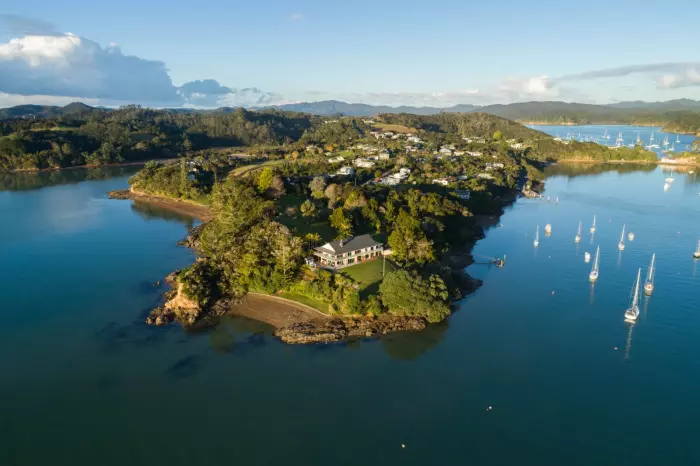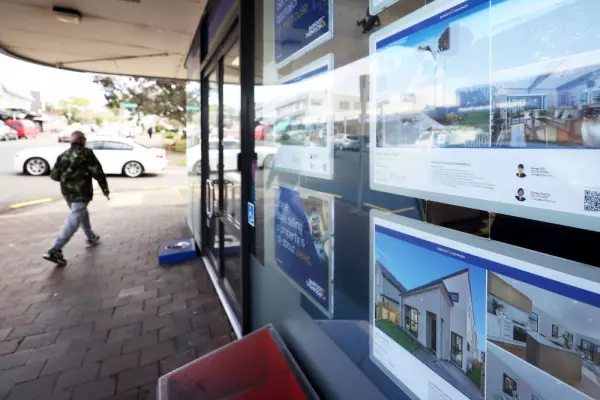An Okiato Rd property near Russell in the Bay of Islands fetched $7 million in early 2020, the most expensive sale last year for a coastal property and reflecting a $2.4 million premium on its rateable value, according to online property site, homes.co.nz.
With such premiums hitting as much as 200 percent for waterfront residences during the year, the love affair with coastal properties is still alive and well, despite climate change fears.
Those fears are being fueled by a regular stream of government-funded and insurance industry reports that suggest there are not only real dangers to rising waters and severe weather patterns associated with climate change, but that tens of thousands of seaside homes and baches could be rendered uninsurable, possibly within the next decade.
The latest, published last month by Climate Sigma for the Deep South National Science Challenge, modeled risk scenarios for more than 10,000 coastal homes through Auckland, Wellington, Christchurch and Dunedin that currently had an ‘annual exceedance probability’ of being exposed to extreme sea level events of 1 percent.
The report notes there will be a 'coastal inundation' - or storm surge overtopping previous high water marks - from 2030, resulting in what it terms a 'partial insurance retreat', reflected in escalating insurance premiums.
Climate Sigma then expects a 'full insurance retreat' as "likely to occur for at least 10,000 properties by 2050."
Wellington is most at risk, where as little as a 12 centimetres of sea level rise could see its AEP threshold move to 5 percent, or a one-in-20 year event.
Even assuming insurance was then still available, that would see annual coastal flood premium rise from an average of $1,700 to $8,700, it said, while in Auckland - where the average is $2,600 - a 15cm increase could see annual premiums skyrocket to $10,000.
Day of reckoning
Tim Grafton, chief executive of the Insurance Council of NZ said “a day of reckoning” was imminent if New Zealanders continued to build properties that were at risk from sea level rise and associated flooding.
“The reports sends a clear signal that insurability of coastal properties will be in question, and we welcome that because we need to start thinking about the future.”
According to estimates by the National Institute of Water and Atmospheric Research, there are 48,600 residential buildings, housing an estimated 133,265 people within 1.5 metres of the spring high tide mark.
NIWA notes that within that mark, there are also 182 critical facility buildings, five airports and 2,121 kilometres of roads.
David Nagel, general manager of Quotable Value, said the issue has now gone well beyond the Kiwi ‘she’ll be right’ mentality. Prospective coastal buyers need to look carefully now at the risks, one of the biggest being the ability to access insurance cover in the future.
He said the implication was also that mainstream banks will think twice before lending against coastal properties, which could “reduce the pool of buyers and cause prices to drop drastically.”
Tom Lintern, head of commercial and chief data scientist at homes.co.nz, said while most coastal and seaside houses attracted a clear premium, there were some pockets emerging where discounts were being seen.
Examples, he said, included Wellington's Roseneath and Seatoun – otherwise highly attractive suburbs – where waterfront properties were cheaper than the overall median price. That could reflect “a higher premium on views or the additional upkeep required for those properties,” he said.
Coastal premiums ramp-up
But overall, the warnings aren't affecting the coastal housing market.
Nagel said most of his own team have pegged coastal areas as their preferred properties for value gains this year.
Coromandel property consultant Jarrod Hedley said values had continued to ramp up, particularly on the eastern side of the Coromandel. QV consultant Derek Turnwald also said auctions for coastal homes in the Bay of Plenty continued to be well attended, selling “well above” seller expectations.
Mt Maunganui does attract a huge premium for its waterfront properties, defined by homes.co.nz as being within 50 metres of the beach. The 92 sales in that category last year attracted a median $2.3 million price compared to a median price in the city of $923,462. But far and away the biggest reward for having a waterfront location came in the Auckland north shore suburb of Milford, where the median price last year was set at $4.3 million, a whopping 203.4 percent on the suburb’s median of $1.4 million.
The median sales price for a beachside pad in Campbell’s Bay, meanwhile, came in at $5.2 million, a 167 percent increase on its $1.9 million paid elsewhere in the suburb, according to homes.co.nz data.
The Okiato Rd deal helped lift the median price of a waterfront property in Russell, meanwhile, to $1.4 million, still a hefty 89 percent premium on the town’s median of $737,107.















